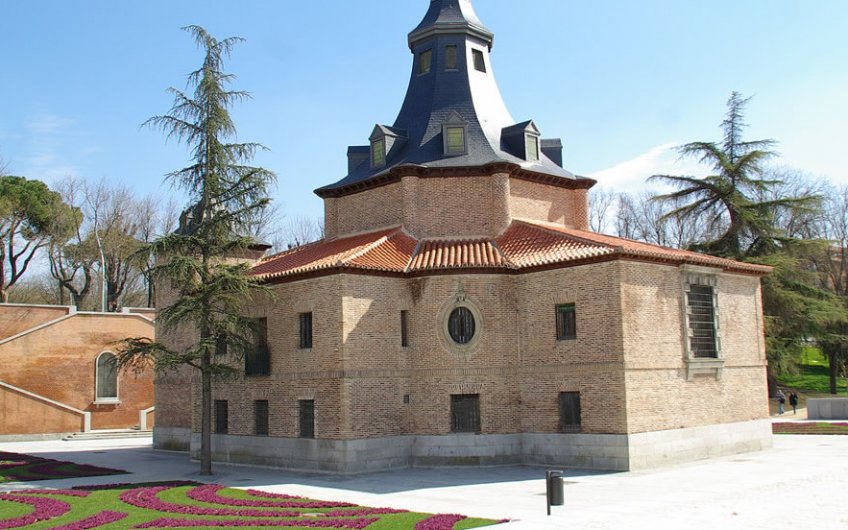
The Virgen del Puerto Hermitage is located in the very heart of Madrid on the left bank of the River Manzanares. A baroque landmark in the city with a long history. It may well be the most picturesque building in Madrid Rio. In this post we want to tell you about its beginnings and give you an idea of its architecture and the refined views that you can enjoy inside. We will also explain how to get there and where to park.
This hermitage owes its name to the port of Lisbon, where the image of the Virgen del Puerto used to be located. Subsequently, during the Arab invasion it was taken to Plasencia and as a result of the Marquess of Vadillo’s devotion an exact replica was made which stayed in Madrid.
In 1716 the then mayor of Madrid, the Marquess of Vadillo, commissioned the building of a hermitage to house his virgin. The architect Pedro Ribero was charged with drawing up the plans for the chapel. Therefore, the Virgen del Puerto Hermitage is an example of the Baroque in Madrid and one of the architect’s first works.
It was built between 1716 and 1718 and was officially opened on 8th September 1718. Two days later, a romeria pilgrimage was held in honour of the virgin. This procession was the beginning of the Arganzuela fiestas, better known as the Fiestas de la Melonera.
Sadly, during the civil war the building and the Virgen del Puerto suffered serious damage and were practically destroyed. Restoration work on the hermitage began in the 40s and in 1945 it was granted the distinction of Historical Monument and Site of Cultural Interest. As the image of the virgin was also destroyed, a new replica was commissioned. The current Virgen del Puerto was crafted by the sculptor Víctor González Gil.
Architecturally speaking, the building is constructed around a central dome shaped structure. It stands with an octagon formed by four chapels and four pillars. The virgin is placed on the high altar, clad in golden wood, and the tomb of the Marquess of Vadillo. Brickwork dominates the façade, which also comprises two towers and a two level stairway which gives access to and from the walkway.
If you want to visit one of Spain’s wonderful Baroque architectural artworks, you can do so on one of the many religious visits to the chapel. Some of them are guided and explain in great detail the various features of the hermitage.
As we mentioned above, if you want to visit the Virgen del Puerto hermitage you will have to go to Madrid Rio, a park on the banks of the River Manzanares. You can get there by public transport as there are bus and metro stops nearby. The closest stop is Puente de Segovia, 269 metres away by foot, and the Parque de Atenas stop, 322 metres away.
Bus lines that take you close to the hermitage are: 39, 41, 65, 138, 500 and C2. On the other hand, if you want to get there on the metro, you need to take line 10 and get off at Príncipe Pío. You will then have about an 8 minute walk where you can take in both the hermitage and the wonderful tree-lined walkway.
If you decide to drive there, there are various areas where you can park for free or for a very low price. The Usera, Legazpi, and Manzanares areas have various green and blue areas. You will have to be aware that green and blue parking areas are paid Monday to Friday from 9am to 9pm, and on Saturdays from 9am to 3pm. The rest of the time they are free.
There are also free parking areas on both banks of the River Manzanares, close to the Paseo de Extremadura. The areas of Usera and Legazpi also have free parking spaces in their streets.
To conclude, if you are interested in finding out more about its history and culture, you really should visit the Virgen del Puerto Hermitage. A landmark Baroque architectural enclave in the Spanish capital with a long history that has been part of life in Madrid for centuries now. Remember that getting there by public transport is easy and there are also lots of parking areas nearby.